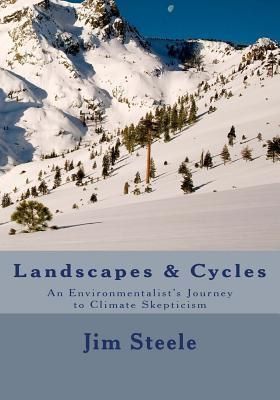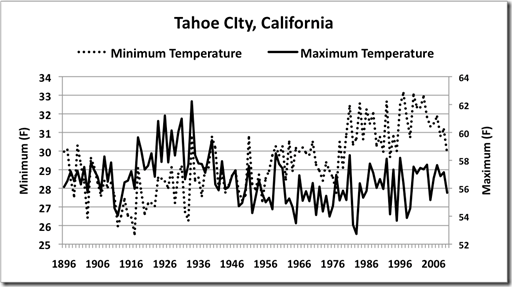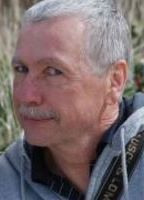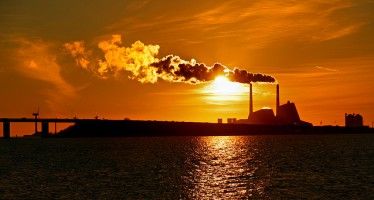Former state biologist challenges global warming status quo

 Editor’s note: This article originally incorrectly said that the Jim Steele who wrote the book mentioned below is the same as the Jim Steele who is running for supervisor in Lake Country. They are not the same person. We regret the error.
Editor’s note: This article originally incorrectly said that the Jim Steele who wrote the book mentioned below is the same as the Jim Steele who is running for supervisor in Lake Country. They are not the same person. We regret the error.
California is about to undertake a massive multibillion-dollar investment in re-engineering fish habitats in the Sacrament Delta called the Bay Delta Conservation Plan. It is already rewiring and revamping the entire state energy and transportation systems to comply with the California’s Global Warming Solutions Act of 2006 to reduce carbon dioxide (CO2) emissions. But Jim Steele’s breakthrough new book — “Landscape and Cycles: An Environmentalist’s Journey to Climate Skepticism” — is highly skeptical that reducing global warming has anything to do with preventing a decline of fish populations, reducing droughts and flooding, or preventing a sea-level rise in the Sacramento Delta.
It is important to understand the significance of who is saying these things.
“We’re not getting hotter, just less cold”
 Steele says that looking at average temperatures to find global warming is useless to a biologist. He found that maximum temperatures have declined and minimum temperatures have risen over the last 100 years near Lake Tahoe in California. His conclusion: “the world isn’t getting hotter, just less cold!”
Steele says that looking at average temperatures to find global warming is useless to a biologist. He found that maximum temperatures have declined and minimum temperatures have risen over the last 100 years near Lake Tahoe in California. His conclusion: “the world isn’t getting hotter, just less cold!”
In chapter one of his book, Steele takes on NASA climate change guru James Hansen: “In contrast to predictions of accelerating heat stress by ‘C02 advocates’ like Dr. Hansen, the past 60 years of climate change in California should have benefited wildlife. … Top-down global climate change models have repeatedly failed to explain regional climate change.” So much for all the global-warming scientists at NASA’s Jet Propulsion Lab in Pasadena and UC Santa Cruz.
Steele says C02 has been so demonized and politicized that it has created a blinding bias that has diverted focusing on factors that affect the biosphere and droughts such as urbanization and ocean temperature cycles called El Niño (wet monsoon rainstorm years) and La Niña (dry years).
Steele is not one who avoids blaming industrialization where blame is due. He relates a story of how he restored a watershed about 50 miles east of Tahoe City that had been degraded by the construction of a railroad 100 years ago. But such changes are local and regional, not global, says Steele. He also points out tornadoes don’t occur in California frequently because there is no naturally formed “tornado alley” as there is in the Midwestern U.S.
Don’t fear for emperor penguins, polar bears
 In chapter four, Steele (shown at right) explains that the emperor penguins shown in the film “March of the Penguins” are not going extinct due to warming. Instead, he writes their numbers have decreased when environmentalists disturbed their habitat and explosives were used on three islands to construct an airplane landing field. Steele’s field research findings are reminiscent of California Judge Oliver Wanger’s ruling that the scientific basis for shutting down water deliveries to protect the Delta Smelt fish was bogus.
In chapter four, Steele (shown at right) explains that the emperor penguins shown in the film “March of the Penguins” are not going extinct due to warming. Instead, he writes their numbers have decreased when environmentalists disturbed their habitat and explosives were used on three islands to construct an airplane landing field. Steele’s field research findings are reminiscent of California Judge Oliver Wanger’s ruling that the scientific basis for shutting down water deliveries to protect the Delta Smelt fish was bogus.
In chapters 14 and 15, he discusses photogenic polar bears that are the poster children of the media. Steele writes that polar bears aren’t going extinct and there never was any warming of their habitats. He offers evidence that the local food supply benefits from less ice.
Steele relates how he has experienced accusations from his colleagues that he is a global-warming “denier” who is collaborating with “Big Oil.” However, Steele explains that Galileo offered his antagonists the opportunity to look through a telescope and see the Earth is round and revolves around the sun and not the other way around. Like Galileo, Steele has encouraged his opponents to look at the historical temperature data, but they have also refused.
He writes that the opposition to Galileo wasn’t religious but was due to entrenched Dominican scientists who refused to look through Galileo’s telescope because their scientific fiefdom was threatened. In California, the impartial state Legislative Analyst’s Office has reported California spends $15 billion a year on energy efficiency programs for which there is no proven effectiveness. This is more than the Legislature appropriates for the entire state university system. Entrenched California bureaucracy is not much different than in Galileo’s time.
Steele’s words of wisdom
A few guidelines for policy-makers and citizens to take away from Steele’s book:
“It is not getting hotter, just less cold.”
“Although it is wise to think globally, all wildlife reacts locally.”
“The U.S. is not particularly warmer or wetter than anywhere else.”
“Many people mistakenly believe limiting CO2 concentrations will control the devastating cycles of El Niño’s floods and La Niña’s droughts.”
“To my great surprise and great relief, when I examined 100 years of local climate observations throughout California, I found they contradicted the global models.”
Steele’s book is written for nonscientists and should be of interest to those who are concerned about California’s wildlife and who are open to a nonconformist evaluation of global warming.
Related Articles
CA bag ban initiative heading toward 2016 vote
The effort to repeal the state’s looming prohibition on plastic grocery bags is projected to have enough valid signatures to
SCOTUS decision rolls back EPA authority
On Monday, the Supreme Court struck down the Environmental Protection Agency’s restriction of power plants’ emissions of mercury and other
CHP’s probe of CalFire yielded leads — unlike DA’s probe of CHP
The reports that suggest the California Highway Patrol did a solid job in handling the investigation of a prostitution scandal




